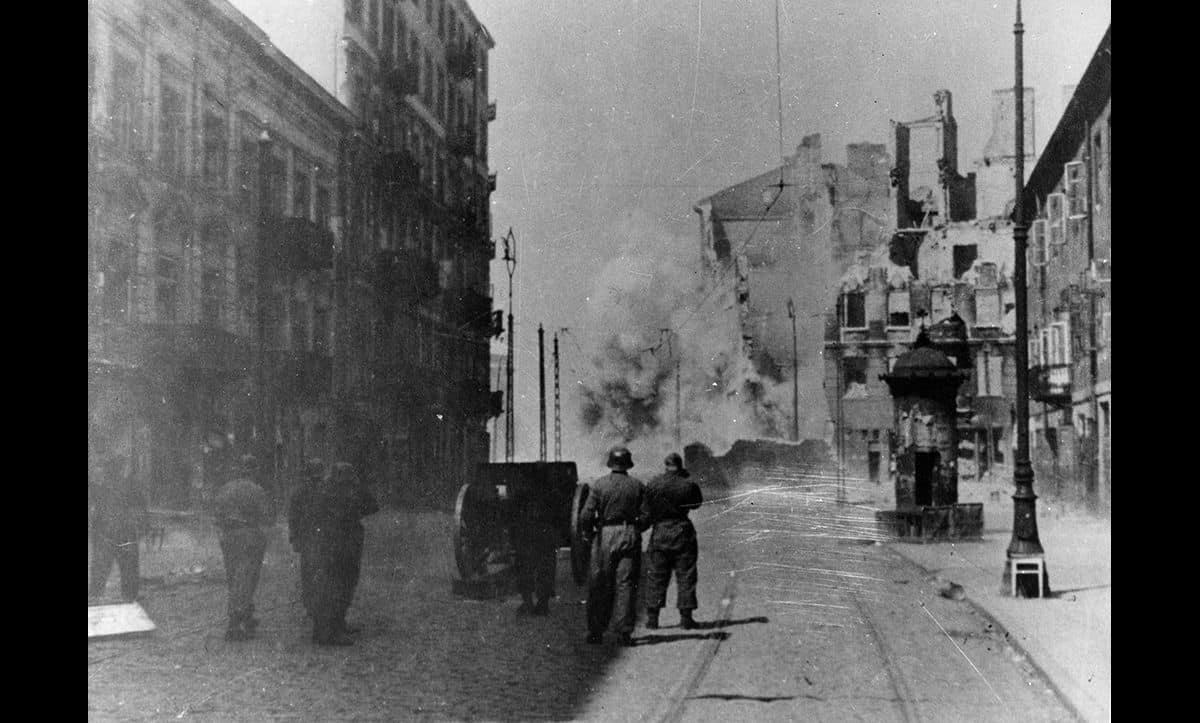One common way of resisting Nazi rule and persecution was participation in resistance groups and networks. These groups had a variety of different aims. Some aimed to sabotage the Nazi war efforts by destroying equipment, some helped people escape from camps and ghettos, and others
disseminated
anti-Nazi pamphlets.
Youth – Baum Group
The Baum group was an underground resistance movement based in Berlin and led by Herbert and Marianne Baum. The group was founded shortly after the Nazis rise to power in 1933 and its members were mostly young Jews who had Zionist and communist sympathies. Prior to the Second World War, the group focused on producing anti-Nazi leaflets and anti-fascist graffiti.
After 1939, the group’s actions became more aggressive. In 1941, they spread information regarding the Nazi atrocities on the eastern front. In 1942, they set fire to a prominent Nazi exhibition in Berlin entitled Soviet Paradise which sought to ridicule
communists
and identify Jews with the Soviet system. Although the fire was put out fairly quickly, one section of the exhibition was destroyed. The group were severely punished for their actions – in total 32 members of the Baum group were murdered by the Nazis, in addition to several of their family and friends who were sent to concentration camps.
Partisans – Bielski brothers
The Bielski brothers were a group of
partisans
who survived the Holocaust by hiding in the forests of Belorussia. After their parents and two of their siblings were murdered by the Nazis in the Nowogrodek ghetto, Tuvia, Asael and Zus Bielski escaped fled to the nearby forests. Initially, their aim was to simply survive and rescue their own family. However, the group soon grew and helped others to escape. By 1942, the group had grown to over seven hundred people.
As the Germans increased raids to crack down on the partisans in late 1943, the group moved to the Naliboki forest, west of Minsk, which was less accessible and therefore better protected. The group refused to turn people away, and the community grew to include a synagogue, bakery, school, synagogue and a basic hospital.
As well as ensuring the survival of the group itself, several members also carried out sabotage missions, helped escape attempts, and attacked German and Belorussian officials suspected of antisemitic persecution.
In mid-1944, the area was liberated by the Soviet army. By that time, the group had grown to 1,230 people, 70% of which were women, children, or elderly.
Intellectuals – White Rose Group
The White Rose was a non-Jewish resistance group created by Professor Kurt Huber and his students (including brother and sister Hans and Sophie Scholl) at the University of Munich. The group primarily focused on creating and distributing anti-Nazi pamphlets and anti-Nazi graffiti. They criticised the Nazis persecution and oppression of Jews, and called for wider resistance to Nazi rule.
After starting their anti-Nazi activities in June 1942, and the group continued until the majority of its leadership were arrested by the Gestapo on the 18 February 1943. Most of those arrested were put on trial and executed, including Professor Huber and the Scholl siblings.

























